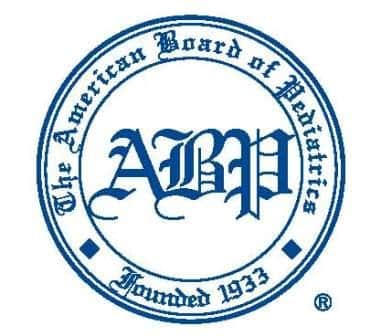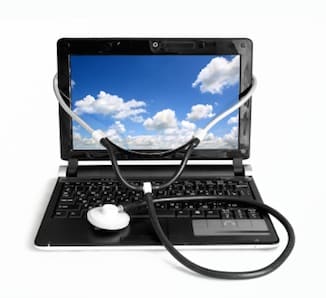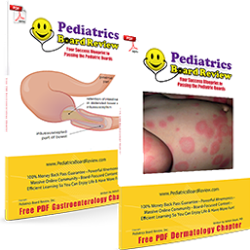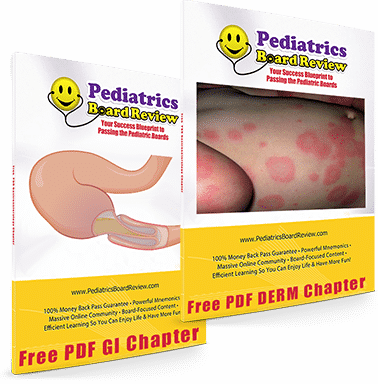About the American Board of Pediatrics
What IS the ABP?
 The American Board of Pediatrics (ABP) is a large and mysterious entity for most of us. In this article I discuss some of the basic ideas behind what the ABP is, and what its existence means to the majority of pediatricians. I also provide you with a few resources and tools from their website since the site is somewhat difficult to navigate. I’m guessing that you will be pleasantly surprised by at least 1 or 2 of the tools they make available on their website. For example, 200 FREE ABP QUESTIONS for anyone with an ABP portfolio!
The American Board of Pediatrics (ABP) is a large and mysterious entity for most of us. In this article I discuss some of the basic ideas behind what the ABP is, and what its existence means to the majority of pediatricians. I also provide you with a few resources and tools from their website since the site is somewhat difficult to navigate. I’m guessing that you will be pleasantly surprised by at least 1 or 2 of the tools they make available on their website. For example, 200 FREE ABP QUESTIONS for anyone with an ABP portfolio!
Goals of the American Board of Pediatrics (ABP)
The American Board of Pediatrics is a nonprofit organization that administers board exams and provides board certification to general pediatricians and pediatric subspecialists. The ABP has been responsible for pediatric accreditation since 1933. Its philosophy is to promote excellence in medical care for children and adolescents.
To make sure that an American Board of Pediatrics accredited physician meets these requirements the ABP examines six core competencies: interpersonal and communication skills, medical knowledge, patient care, practice-based learning and improvement, professionalism, and systems-based practice.
As a non-profit organization, they are not tied to any specific institution. However, they do try to maintain policies that in line with those suggested by the American Board of Medical Specialties. (ABMS).
What is the Purpose of Board Certification?
 I’d say this is debatable, but the ABMS states that “by pursuing board certification, you elevate yourself into the ranks of physicians committed to maintaining the highest possible standards for healthcare.”
I’d say this is debatable, but the ABMS states that “by pursuing board certification, you elevate yourself into the ranks of physicians committed to maintaining the highest possible standards for healthcare.”
What will Board Certification do for me?
 ABP initial board certification is not mandatory. However, there are significant benefits a pediatrician typically gains from being board-certified.
ABP initial board certification is not mandatory. However, there are significant benefits a pediatrician typically gains from being board-certified.
- Wider Knowledge Base: Preparing for a board certification exam helps you learn and cement medical knowledge that you may have had little, or no, exposure to in your residency training.
- Increased Patient Volume: The ABMS website advises parents looking for a pediatrician to seek physicians who have achieved board certification. It further suggests that certified physicians are likely to be more competent than those who have a basic medical license. To see just how important these credentials are, simply Google “How to choose a pediatrician.” Almost every single post recommends finding a pediatrician who is either board certified or a member of the American Academy of Pediatrics (AAP).
- Job Opportunities: If you are a private practitioner, or working in a rural and underserved area, it’s possible board certification may not stand in the way of a job. For most major hospitals, though, board eligibility or board certification is a requirement. This is also the case for many larger, group outpatient practices.
- Earning A Livelihood: Along with specific job opportunities within your state, there’s the possibility that board-certification may be required to simply hold a medical license in the future. While board certification is currently not required in any U.S. state to practice pediatrics, there are more discussions taking place at the level of the government surrounding the idea of tying in board-certification with medical licensure. I briefly discuss this in another PBR article called, “Could Your State Require Pediatric Board Certification to Practice?”
Which Exams are administered by the ABP?
The ABP overseas a number of pediatric examinations aimed at physicians who are at all stages of their career.
- General Pediatrics In-training Examination (aka ITE, aka Pediatric In-Service Exam)
Since 1971, the ABP has offered annual In-training exams. If you are listed on a pediatric residency tracking roster then you are entitled to sit for these. The exams take place in July and last for 3 hours. They consist of approximately 150 multiple-choice questions.
The ITE is an abbreviated version of the main certifying exam and uses the same content specifications as the initial certification exam. It is a valuable part of your pediatric journey and will give you some guidance as to how you will do on the pediatric boards themselves.
To read a series of articles on how to study for the pediatric in-service exam, start with the PBR article called, “Can I Improve Pediatrics In-Training Exam Scores For Myself? Or For My Program?”
- General Pediatrics Certification
 This is the main certification exam of the American Board of Pediatrics. Historically, it has been the most difficult exam administered by the ABP and the exam day lasts approximately 8 hours. Anyone who passes the General Pediatric Boards is entitled to call themselves a Diplomate of the American Board of Pediatrics.
This is the main certification exam of the American Board of Pediatrics. Historically, it has been the most difficult exam administered by the ABP and the exam day lasts approximately 8 hours. Anyone who passes the General Pediatric Boards is entitled to call themselves a Diplomate of the American Board of Pediatrics.
Until 2012, the exam was administered in large, group test centers on “scantron” or “fill-in-the-bubble” sheets with failure rates as high as 25%. In 2012, the ABP changed over to a fully computerized system at Prometric Test Centers across the U.S. There were also significant scoring changes which resulted in a substantial increase in pediatric board pass rates as well (86% in 2012).
- Maintenance of Certification (aka the MOC or pediatric recertification exam)
As of 1988, certificates issued by the ABP are time-limited. To remain Board-certified, pediatricians must complete a Maintenance of Certification (MOC) exam components every 10 years, BUT certain parts of the MOC must be completed well BEFORE the 10 year mark (more on that below).
The ABP follows a four-part structure that is aligned with the American Board of Medical Specialties (ABMS) model of MOC. This four-part structure focuses on 6-core competencies. Parts 1, 2 and 4 should be completed within 7 years of initial certification (or within 7 years of your last recertification), and Part 3 (the “real exam”) should be completed within 10 years. The four parts of the pediatric maintenance of certification are discussed below:
- Professional Standing (Part 1): Hold a medical license in good standing
- Lifelong Learning and Self-Assessment (Part 2): This part of the Maintenance of Certification (MOC) program is designed to help pediatricians enhance their clinical knowledge and practice skills. Self-assessments are available to general pediatricians and pediatric subspecialists in the following areas: Knowledge, Decision Skills and Subspecialty. For select self-assessments, Continuing Medical Education (CME) credit is available. Not all self-assessments are associated with passing scores. Some simply require that you go through a set of questions.
 Cognitive Expertise Secure Exam (Part 3): Until 2003, this was a take-home, open-book exam. Since 2003, it’s become a secure exam and is now administered in Prometric Testing centers on a computer. In general, when pediatricians talk about the MOC exam (aka the pediatric recertification exam), this is the part that they are referring to since it’s considered the most difficult and stressful part of the MOC process. It is a 200 question, multiple-choice test that is completed over the course of a half-day testing session. Compared to the initial certification exam, though, the pediatric MOC exam is MUCH easier and is tailored towards general practitioners. The pass rate for PBR members who took the pediatric MOC recertification exam in 2011, 2012 and 2013 has been 100%. Surprisingly, the ABP does not charge you to take the exam as long as you pass on your first try. The American Board Of Pediatrics Content Specifications (aka the American Board Of Pediatrics Content Outline) is the same for the In-Training Exam, Initial Certification Exam, and the Maintenance of Certification Exam. Sixty (60) AMA PRA Category 1 Credits™ are awarded for certification. If you are requesting the AMA PRA Category 1 Credits™, you will need to complete an application for direct credit and attach a copy of the board notification letter.
Cognitive Expertise Secure Exam (Part 3): Until 2003, this was a take-home, open-book exam. Since 2003, it’s become a secure exam and is now administered in Prometric Testing centers on a computer. In general, when pediatricians talk about the MOC exam (aka the pediatric recertification exam), this is the part that they are referring to since it’s considered the most difficult and stressful part of the MOC process. It is a 200 question, multiple-choice test that is completed over the course of a half-day testing session. Compared to the initial certification exam, though, the pediatric MOC exam is MUCH easier and is tailored towards general practitioners. The pass rate for PBR members who took the pediatric MOC recertification exam in 2011, 2012 and 2013 has been 100%. Surprisingly, the ABP does not charge you to take the exam as long as you pass on your first try. The American Board Of Pediatrics Content Specifications (aka the American Board Of Pediatrics Content Outline) is the same for the In-Training Exam, Initial Certification Exam, and the Maintenance of Certification Exam. Sixty (60) AMA PRA Category 1 Credits™ are awarded for certification. If you are requesting the AMA PRA Category 1 Credits™, you will need to complete an application for direct credit and attach a copy of the board notification letter.- Performance in Practice (Part 4): This part is meant to allow pediatricians to demonstrate competence in systematic measurement and improvement in patient care. Physicians are expected to complete Quality Improvement projects. These Quality Improvement (QI) projects may be teams-based “Established Quality Improvement Projects”, or individual “Web-based Improvement Activities.” Continuing Medical Education (CME) credit . The ABP-developed Performance in Practice QI projects qualify for Continuing Medical Education (CME) credit. See Approved QI Projects for CME opportunities.
- Reciprocal Maintenance of Certification (MOC) Credit: For physicians who are diplomats of another American Board of Medical Specialties (ABMS) board, such as the American Board of Internal Medicine (ABIM) for Med-Peds physicians like myself, credit for Part 2 and Part 4 may be shared.
- Subspecialty Examinations
Subspecialists must first complete an additional training period (usually three years) in a focused area, such as adolescent medicine. Subspecialty exams are usually held every other year (with the exception of sports medicine which is annual), they usually last half a day and consist of multiple choice questions. Below is a list of the subspecialty exams available, along with the month in which they are usually taken (listed for most subspecialties).
- Adolescent Medicine – April
- Cardiology – November
- Child Abuse Pediatrics – November
- Critical Care Medicine – November
- Developmental-Behavioral Pediatrics
- Emergency Medicine
- Endocrinology – November
- Gastroenterology – November
- Hematology-Oncology
- Hospice and Palliative Medicine – October
- Infectious Diseases – November
- Medical Toxicology – October
- Neonatal-Perinatal Medicine – April
- Nephrology – April
- Neurodevelopmental Disabilities – October
- Pediatric Transplant Hepatology – October
- Pulmonology – November
- Rheumatology
- Sleep Medicine – October
- Sports Medicine – July (Annual)
Where Can I Find the American Board of Pediatrics Content Specifications (aka Content Outline)?
The American Board of Pediatrics Content Specifications are the same for the pediatric In-Training Exam (ITE), pediatric Initial Certification Exam, and the pediatric Maintenance of Certification exam (MOC or recertification). There is a full content outline available on the ABP website. Not only will this give you a very good guide as to what you need to know, but it also includes a breakdown of what percentage of marks are concentrated in which section. Please keep in mind that my experience (discussing the MOC exam with several PBR members) tells me that the MOC exam focuses on general pediatrics much more than the subspecialty areas. The subject areas covered in the ABP Content Specifications are listed in brief here (percentage values change slightly every year):
- Growth and Development
- Nutrition and Nutritional Disorders
- Preventive Pediatrics
- Poisoning and Environmental Exposure to Hazardous Substances
- Fetus and Newborn Infant
- Fluid and Electrolyte Metabolism
- Genetics and Dysmorphology
- Allergic and Immunologic Disorders
- Infectious Diseases
- Metabolic Disorders
- Endocrine Disorders
- Gastrointestinal Disorders
- Respiratory Disorders
- Cardiovascular Disorders
- Blood and Neoplastic Disorders
- Renal and Urologic Disorders
- Genital System Disorders
- Neurologic Disorders
- Musculoskeletal Disorders
- Skin Disorders
- Collagen Vascular and Other Multisystem Disorders
- Disorders of the Eye
- Ear, Nose and Throat Disorders
- Adolescent Medicine and Gynecology
- Sports Medicine and Physical Fitness
- Substance Abuse
- Disorders of Cognition, Language, and Learning
- Behavioral and Mental Health Issues
- Psychosocial Issues and Child Abuse
- Critical Care
- Emergency Care
- Pharmacology and Pain Management
- Research and Statistics
- Ethics for Primary Pediatricians
- Patient Safety and Quality Improvement
Is there any time limit as to when I should take the exam?
 The ABP has created a policy that states that the training required for certification must have been completed within the seven years prior to the initial certification examination. This was in response to a mandate set forward by the American Board of Medical Specialties (ABMS) which stated that the ABP needed to establish a process for re-entry into the certification process. This essentially means “If you haven’t been able to pass the boards within 7 years after finishing your residency, you need to go back to residency for 1 year to become board eligible.” You are no longer able to take the exam year after year.
The ABP has created a policy that states that the training required for certification must have been completed within the seven years prior to the initial certification examination. This was in response to a mandate set forward by the American Board of Medical Specialties (ABMS) which stated that the ABP needed to establish a process for re-entry into the certification process. This essentially means “If you haven’t been able to pass the boards within 7 years after finishing your residency, you need to go back to residency for 1 year to become board eligible.” You are no longer able to take the exam year after year.
So, it’s now more IMPORTANT than ever that if you are planning on applying for board certification you take the exam within seven years of completing your training. If you do not, you will need to complete an additional training period (read return to residency for 12 months), before you can take the exam again.
How long will my certificate last?
All ABP certificates with an end date to expire on December 31 of the year of expiration, which is usually 10 years after you passed.
What can I expect on a pediatric board exam test day?
 While there is a comprehensive list of do’s and don’ts for test day available on the ABP website, here are just a few pertinent pieces of information I think you might need.
While there is a comprehensive list of do’s and don’ts for test day available on the ABP website, here are just a few pertinent pieces of information I think you might need.
- You MUST arrive at the test centre at least 30 minutes before the exam is due to start, arriving after this time may mean that you are refused entry and you will be unable to sit the test at the scheduled time.
- If you think that you are going to need to reschedule, try and do it at least 30 days before the exam, in this way you will avoid any rescheduling fee. Wait until less than 5 days before the exam, and the rescheduling fee may be substantial.
- There is a long list of items which are prohibited from being taken into the test room available on the ABP website, these range from electronic devices to tissues. If you need medical equipment such as an inhaler, special exemption should be sought prior to taking the test.
- You are permitted to take into the exam room your photo id, your locker key, soft earplugs, center-supplied tissues and center-supplied note boards and markers. That’s about IT!
- Each time you enter the testing room your pockets will need to be empty. Some centers may even use metal detector wands.
- You will be given the opportunity to review a brief tutorial. If you view the tutorial 1-2 days BEFORE the exam using the ABP’s mock Prometric exam, you will NOT need to waste your brain power or your time on this section. Note that the exam time and break schedule given in the mock exam is for the MOC and NOT for the general certification exam!
- Examination day is lengthy, and can range from 5 hours for the MOC exam to 8 hours for the General Pediatrics exam. However, each exam does include 15 minutes of scheduled break time every 2 hours or so. TAKE those breaks because if you need to suddenly take a break outside of the scheduled breaks, your exam timer will still be running.
What do I need to do to pass?
For the initial certification exam, the ABP changed the way in which they score the boards in 2012. The exam is no longer graded on a curve, and even the scoring system was changed from an 800 point scale to a 300 point scale. When this change was announced, I predicted that the result would be an improved overall pass percentage. It turns out I was right, you can read more about 2012’s incredible pass rate here.
There is so much more I could discuss about the American Board of Pediatrics, but I think this article will serve as a great overview for most pediatricians.
VALUABLE TOOLS FROM THE ABP WEBSITE
Okay… I think that about wraps it up. BUT, I do want to end with a bang. Here are some tools from the ABP site that are TOUGH to find but invaluable to have:
American Board of Pediatrics Practice Exam Tutorial Area
Use this to familiarize yourself with the Prometric interface and platform. Practice shortcuts, marking questions, navigating with the keyboard, navigating with keyboard strokes, etc. Note that the exam time and break schedule given in this mock exam is for the MOC recertification exam and NOT for the general certification exam.
200 American Board of Pediatrics Practice Questions that are FREE!
When taking Part 2 of the pediatric MOC recertification exam, you can actually go through 200 ABP questions. It’s a PHENOMENAL way to see how you might actually do on the MOC exam. If you try to find the 200 questions on the ABP website, you’ll end up in a NIGHTMARE. You must be logged in to access the information, and it’s possible that this area is ONLY available to pediatricians who are already board certified (i.e. it may not be available to you if you still need to pass the general certification boards).
American Board of Pediatrics Content Specifications
This is also known as the American Board of Pediatrics Content Outline for the Pediatrics In-Training Exam (aka In-Service Exam), General Certification Exam and the Maintenance of Certification Exam (aka MOC or recertification exam). Note that the content specs published are all the SAME for all 3 exams, though my belief is that the MOC exam has far fewer subspecialty questions:
www.abp.org/apply-exam/about-our-certifying-exams/content-outlines-subspecialties
Was this article helpful in understanding the ABP? If so, please click the LIKE button on this page.
Also, if you have any additional questions about the ABP you’d like answered, just ask by typing in your question below and I’ll do my best to help J



